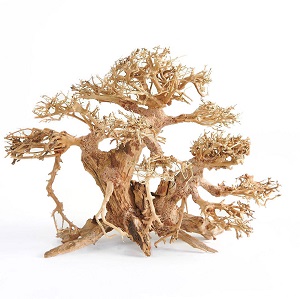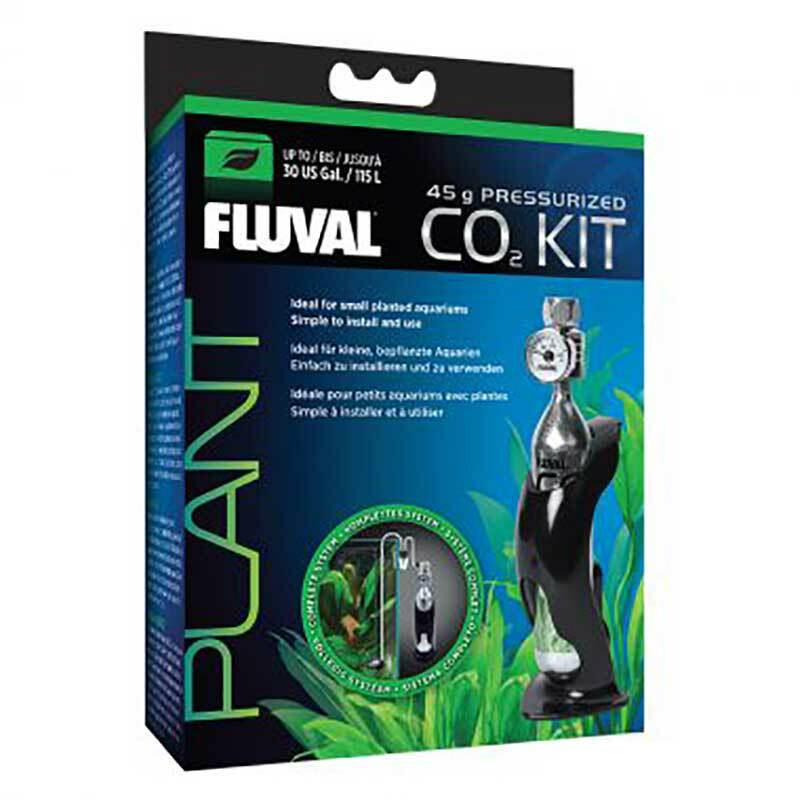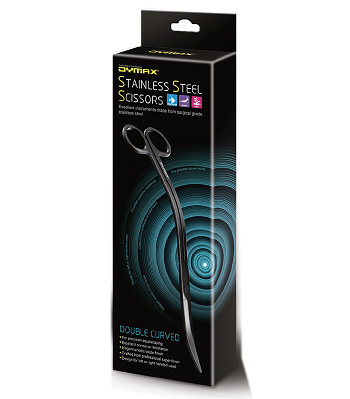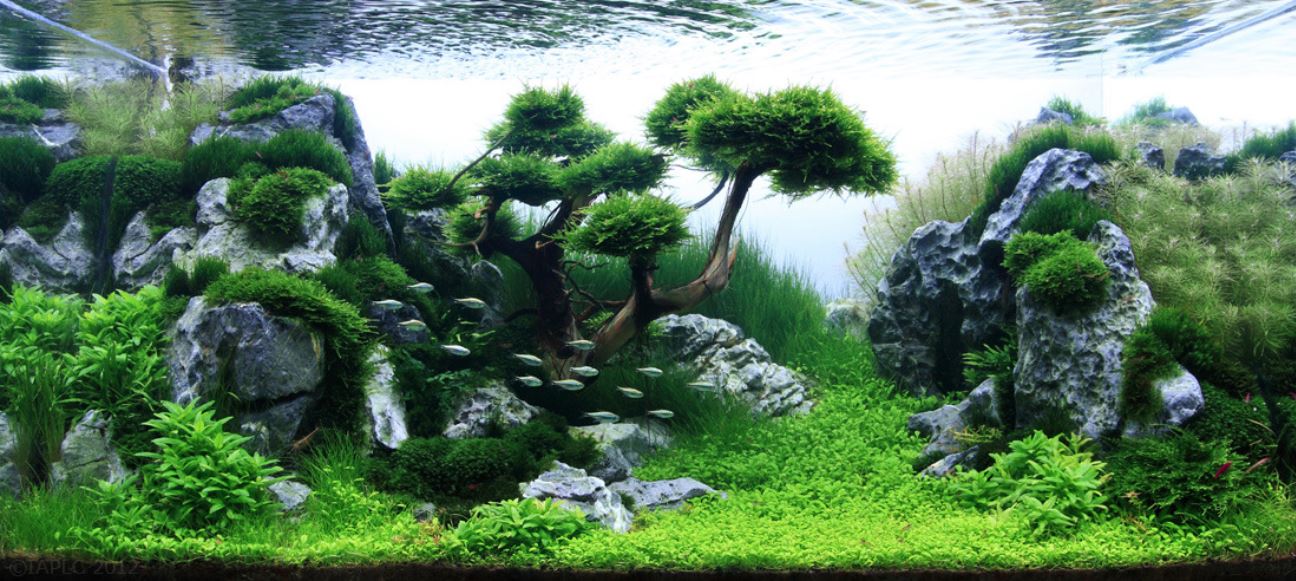Aquascaping - How To Get Started
On: 20 February 2023
There's so much to love about a beautifully structured planted tank. What do you think?
Gone are the days when Aquarium tanks needed to be filled with fish to look cool.
What Is Aquascaping?
Names like Oliver Knott and Takashi Amano have sparked new interest and appreciation for the art of aquascaping – the creation of beautiful underwater landscapes using a combination of rocks, driftwood and live plants – and we're on board!
(Image credit to Takashi Amano)
Don't let the look of more advanced setups intimidate you. Aquascaping is a popular hobby for those of all skill levels – it's a hobby that can grow with you (literally) as you refine your skills.
Here's how to get started with aquascaping.
Types Of Aquascaping
Aquascaing is quite artistic. Have a snoop around for inspiration and find a look you're drawn to. Do you like an overgrown jungle-y look or something more structured? What about a tank with elements emerging from the water? Or do you like it fully submerged?
While there are several aquascaping themes to choose from, four of the most common include:
1) Jungle Aquascape
A jungle style setup is a great place to start because it's all about looking untamed –with plants allowed to grow as they like through the tank. A jungle style aquarium setup can look awesome without worrying so much about the fiddley stuff.
2) Dutch Aquascape
The Dutch style of aquascape relies less on features like rock and driftwood and lets the plants do all the work. Dutch setups will often include a range of stemmed plants. You'll want to research the types of plants that will suit this setup to ensure they work cohesively. Chat to our friendly team for tips!
3) Iwagumi Aquascape
Iwagumi style tanks are quite minimalistic but still pack wow-factor. These aqua tanks often feature a few selected rock pieces surrounded by a carpet of beautiful green grass-looking plants. Although this setup looks the simplest, it is actually one of the more difficult to maintain. Because plants rely heavily on their roots for nutrients, the choice of substrate is very important as well as fertilisation and water maintenance.
4) Bonsai Aquascape
Bonsai style aquascapes are super mesmerising. They look like a mini universe has been captured in your tank! Check out our beautiful and unique bonsai pieces. These are available in store only due to their delicate nature.
Your Must-Have Aquascape Supplies
So you've found an aquarium style you like, now what elements do they include?
At Pet City, we have a range of materials to help you design your perfect aquascape. Here's a checklist of equipment you'll want to consider for your planted tank:
- Your tank
- Tank lighting
- Driftwood
- Live plants (available in varying levels of ease of care)
- Bonsai driftwood collection (in-store only)
- Gravel & Substrate
- Aquascaping rocks
- Tweezers
- Aqua glue
- Aquarium filters
- Co2 equipment
- Substrate leveller
- Trimmer
- Your choice of livestock! This can include freshwater fish, snails, and shrimp. Be sure to ask our Pet City team about suitable livestock for your tank.
Aquascaping Tank Selection
Your chosen tank is like your canvas and it can add to the end look you're going for. We love the look of our Bioscape tanks which include LED lights to give your living art piece the light it needs to encourage healthy growth and vibrant colours in your tank. Bioscape's cloud tanks have an elevated tank floor for a floating look and the teardrop shape looks cool in any room of the house! Another popular option are our Opti Clear tanks which come in a range of sleek shapes and sizes.
Aquascaping Plant Selection
Remember the styles of scaping tanks we mentioned earlier? You'll want to ask a Pet City team member which plants they recommend to achieve the look you're going for.
Java ferns & Anubias are popular in jungle style tanks and are great for beginners as they require minimal maintenance. One thing to note with these guys is they absorb most of their nutrients through their leaves so prefer to have their roots exposed. With this in mind, you'll want to grab an aqua glue like Seachem Flourish Glue so you can secure these plants to other tank features.
Java moss and dwarf hairgrass are popular plants for ground cover and Rotula is another popular rooted plant. For rooted plants, a good quality substrate is key as they'll gain all their nutrients through their roots. Chat with our Pet City team about the best substrate for your scaping setup.
Top tip: When selecting your plants and decorative pieces, keep scale in mind. You'll want to choose plants that make sense for the size of the tank you're filling.
.jpg)
How To Build An Aquascape
Woohoo! You've got all your materials, you're feeling creative and ready to start building your aquascaping masterpiece! Where to being?
First, bring up your inspiration to refer to, or even draw out a rough blueprint of where you want everything to sit. Before you even touch the water to fill your tank with, you can position your elements in your tank to see how you like them sitting.
Lay Your Substrate
Clear your tank and begin to lay the substrate or gravel across the bottom of your tank as the base of your planted ecosystem. Most substrates recommend 2-3 inches – don't skimp if you're planting rooted plants or their roots will run out of space to grow.
Place Your Centrepiece
Next, you can place the key features or centrepiece in your tank – often your rock or driftwood. You can secure larger items with scaping glue if you wish, or you may prefer to leave them separate so you can move them around as you please.
Hardscaping (Rocks & Wood)
If you're using any other rocks or pieces of decoration you'd like to sit in a certain position, you can go ahead and secure these with aqua glue. You're then able to position any plants as you please around these pieces.
Place Your Plants
For rooted plants, our experts recommend adding in most of your substrate and spritzing it with water until it is moist and you can mould your plants into place. You can also use little weights to hold your plants down until they establish a sturdy root system. Keep in mind that certain plants, known as epiphytes, like to have their roots exposed, not planted.
You'll want to use a good quality aqua glue to secure all your plants so they don't go floating around once water is added to your tank. You can secure your plants to pieces of driftwood, rocks or similar.
Just Add Water
Most of our aquascapers use tap water and add a de-chlorinator like Seachem's Prime. When first pouring in your water, you'll want to minimise how much it stirs up your scaping floor. If you have an exposed area of substrate, it helps if you lay something over it while pouring in water gradually to stop it from being sprayed everywhere – even a dish will help. If your tank has any rocks or driftwood, it can help to pour the water onto these features and let it trickle down so it reduces disturbance to the substrate. Some scapers will also pour their water through something like a colander to break the water up so that it's not as hard-hitting as a solid stream.
How To Maintain Your Tank
You now have a beautiful piece of living art for your home. Now you've got to keep it looking its best.
Manage your CO2
All plants need to take in carbon dioxide (CO2) and water (H2O) to photosynthesise (the process of creating oxygen). In the wild, submerged plants are exposed to enough CO2 from surrounding degrading plant matter, though in an enclosed tank, CO2 needs to be supplemented. At Pet City we offer a range of CO2 equipment to help you maintain appropriate levels of CO2 in your tank & help your plants thrive! A popular setup for smaller or beginner tanks is our Fluval CO2 Kit. Chat to our friendly team for help with your setup.
Filtration
You might be wondering if you need a filter on your planted tank and the answer is yes! Besides cleaning your tank of harmful waste, a filter also helps to distribute oxygen evenly throughout the tank.
Water Changes
One of the easiest and most important things that will keep your tank looking crisp is regular water changes as this will avoid algae growth and keep the water looking crystal clear. For most planted tanks, we recommend a weekly 10-30% water change which you can syphon out and refill with treated tap water.

Plant Settling Period
Also, something to keep in mind, many aquascaping plants are initially grown out of the water. So the transition from being emersed to submersed can result in a few lacklustre stems. Don't panic, this is completely normal and you can simply trim away any dead sections so your plant puts energy into producing healthy new growth. On the other hand, plants which have started out under water who are introduced to an initial dryscape will need to be spritzed with water to keep them moist before water is added.
Fertilisation
We recommend fertiliser like Seachem Flourish or LCA all-in-one for any planted tank because it promotes healthy growth and vibrant colours by providing the right balance of nutrients. Another option is purchasing a substrate that contains higher levels of nutrients like Oliver Knott's Aquaearth. The type of fertiliser and amount you use will depend on the size of your tank and the types of plants you keep. Chat to our friendly team to find the right fertiliser for your setup.
Trimming
You'll start to notice how fast different plants in your tank grow and get into a rhythm with maintenance. Most plants will make new shoots as you cut them back, so keep this in mind if you're scaping is quite structured. 
General Cleaning
Cleaning your tank glass will help keep your setup looking shiny and new. There are several glass cleaners available - find one that suits the size, depth and shape of your tank. If you notice algae growing on any of your surfaces, scrub the item to stop the algae growth in its tracks before it takes over.
Time To Get Aquascaping
That's the basics of aquascaping!
Our team are avid aquascapers themselves! So if you have the opportunity, come in to wrack their brains about ideas for material combinations and tricks you can use. Not nearby? No problem! Order what you need online and if you run into any questions, our team are always happy to help via Facebook messenger!










